 See also:
See also:
Yamaha’s Ténéré travel bikes
Yamaha XScrambleR 700
Yamaha XT660Z Tenere
Africa Twin

In the UK, July’s ABR show was the only chance to road-test Yamaha’s much-awaited XT700 Tenere before it reached dealers.
As a Tenere rider from the very start, and a fan of Yamaha’s proven CP2 engine from my XSR 700 (below right), I’ve been looking forward to trying the XT7. The show’s timing also allowed a fortnight before a ~3.5% pre-order discount expired, bringing the cost down to £8400.
In a line:
With the irresistible CP2 motor and legendary branding, the new XT700 Tenere will be a hit.
What they say [includes typos]
When you’re riding the new Ténéré 700, your future can be whatever you want it to be. Because this a go-anywhere motorcycle that enables you to live life without limits and experience a new feeling of total freedom.
Driven by a high-torque, 689cc, 2-cylinder engine, equipped with a special optimised transmission that gives you the ideal balance of power and control, this rally-bred long distance adventure bike is built to master a wide range of riding conditions on the dirt of asphalt.
The compact tubular chassis and slim bodywork offer maximum agility during stand up or sit down riding – and long travel suspension and spoke wheels give you the ability to get to anywhere you want. Just fill up and go! The Next Horizon is Yours.
•  Engine character and response – it’s perfect
Engine character and response – it’s perfect
• Fully adjustable, plush suspension
• Pre-load adjustment knob
• Weighs 205kg (unverified). Same as my 660Z and less than my CB500X RR
• Flat but grippy textured seat
• Brakes feel good, road or dirt
• Brisk and agile on the road
• A display scroll button now on right bar
• 25,000-mile valve-clearance intervals
• Well set up cockpit
• Centre stand – at least an available option
• OMG – no beak!
![]() • Is it such a bargain? Over £2k more than an MT-07
• Is it such a bargain? Over £2k more than an MT-07
• At 16-litres, the tank could use a couple more
• Top-heavy at a standstill
• At 34.5″ (875mm), the stock seat is high (there are lowering options).
• Non-adjustable screen
• Handguards are all plastic
• Screw-in filler cap
• Tall riders will need bar risers to stand comfortably
Modern bikes from established manufacturers are now predictably brilliant, and recent launch reviews raved about the XT700. No great surprise there; Yamaha took their time getting the new Tenere just right while keeping the price down. We’ve all read or experienced what happens when that doesn’t happen. And like Honda’s Africa Twin of a few years ago, Yamaha chose to dodge a ‘because-we-can’ horsepower and tech-war with the KTM790 Adventure with which the XT7 is being inevitably compared.
The new Tenere shares the same CP2 motor with the MT-07, Tracer tourer and XSR retro. Everything else is new or different. Since being introduced in 2014, all three have combined to make one of the most successful model ranges for Yamaha. By now over 100,000 units have been sold worldwide and the XT700 will add to that figure just a fast as they can bang them out.
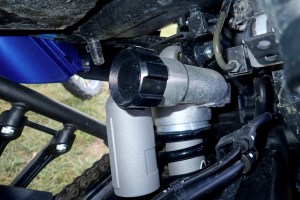
They may have saved time by ignoring electronic aids but, crucially, Yamaha didn’t cut corners on the suspension, which often defines budget Jap bikes these days. And the XT includes one of my favourite gadgets: a 26-click hydraulic pre-load adjustment knob (PLA; left) on the piggyback shock. It means you don’t have to faff about with C-spanners, or more often, hammers and chisels, to alter preload. It may be right under the mudguard collecting crap off the tyre rather than to one side, but this sort of real-world prioritising speaks to riders like me whose eyesight is now too poor to be dazzled by colourful TFT screens, quick-shifters, cornering ABS, traction- and cruise control plus ESA and over a dozen engine modes. Years of hard-won experience have taught us to simply ride appropriately for the conditions and location, be that negotiating a rainy winter’s rush hour, or off-roading alone in the middle of nowhere (left).
Hook up a throttle cable to a CP2 motor and that’s all the traction control you need.
Indeed – just like the old Tenere singles, many commenters (and they are legion) are citing the XT700’s very simplicity including lack of riding aids, as integral to its appeal. It’s kept costs down, doesn’t radically affect the bike’s day-to-day usability, and is one less thing to light up the dash should the electronics play up.
That leaves ABS, which is now mandatory on all new bikes in the EU. Unlike the list above, it’s a safety feature I welcome, and at a standstill, can be disabled for the dirt. (On loose surfaces ABS can cut in too soon and extend braking distances. You don’t want that, though I’ve found at normal dirt speeds ABS on bikes is rarely a problem.)
My impressions
Compared to the original T7 concept from a bike show back in 2016 (left), the production bike looks as good, but not dazzling. According to a tape measure, it has nearly the same dimensions as an Africa Twin (right); in fact it’s two-inches longer but it sure looks less bulky. (There were loads of ATs at this show. Great to see how popular they’ve become alongside the You Know Whats).
With a 32-inch inseam and workboots, on the standard 875mm-high (34.5″) seat I was able to get my feet flat on the ground, but with little knee-bend to spare. There’s a lowering kit (£228) which includes a link and, combined with a 20-mm fork drop, lowers the seat height substantially to 837mm (32.9″). Plus there’s a higher, rally seat. I noted coming back to the Yamaha stand one normal-sized bloke struggling to manoeuvre his T7 into place; one foot in the air, the other on tiptoe.
I’d definitely consider the lowering kit, even if the seat will probably lose padding and lowering links (‘dogbones’) alter factory-designed suspension geometry. At least the Tenere’s suspension can be easily retuned, should you notice a difference. I also see on this YT video there’s also a two-part seat option (right), and the rear section can be swapped for a rack.
Although the CP2 motor is a slim unit, they’ve maintained that overall impression with a narrow seat and screen. Even the LCD display is in portrait format to suggest lack of width. This is not a wide-arsed GS12 or XT1200Z, and because of that feels less intimidating and more fun to ride on and off road.
The plain LCD digital dash is a rectangular version of the round unit off my XSR: switchable Imperial/metric speed, gear, fuel and time readouts, plus the same range of seven other metrics in various formats, but with only room to display one at a time. On the MT-07/XSR you reached over and scrolled with a button on the dash. The XT700 has a Select button on the right bar (below) which does the same and so makes it much easier to change the display on the move. Cycling the button seven times hits them all. Neat and simple.
• Ambient temperature (C or F)
• Engine temp
• Average mpg (or other formats)
• Current mpg (ditto)
• Odometer
• Trip
• Another trip?
Up here you also have a power outlet plus a place for another one, and a bar above the display for mounting a navigation aid or even a roadbook at near eye level.
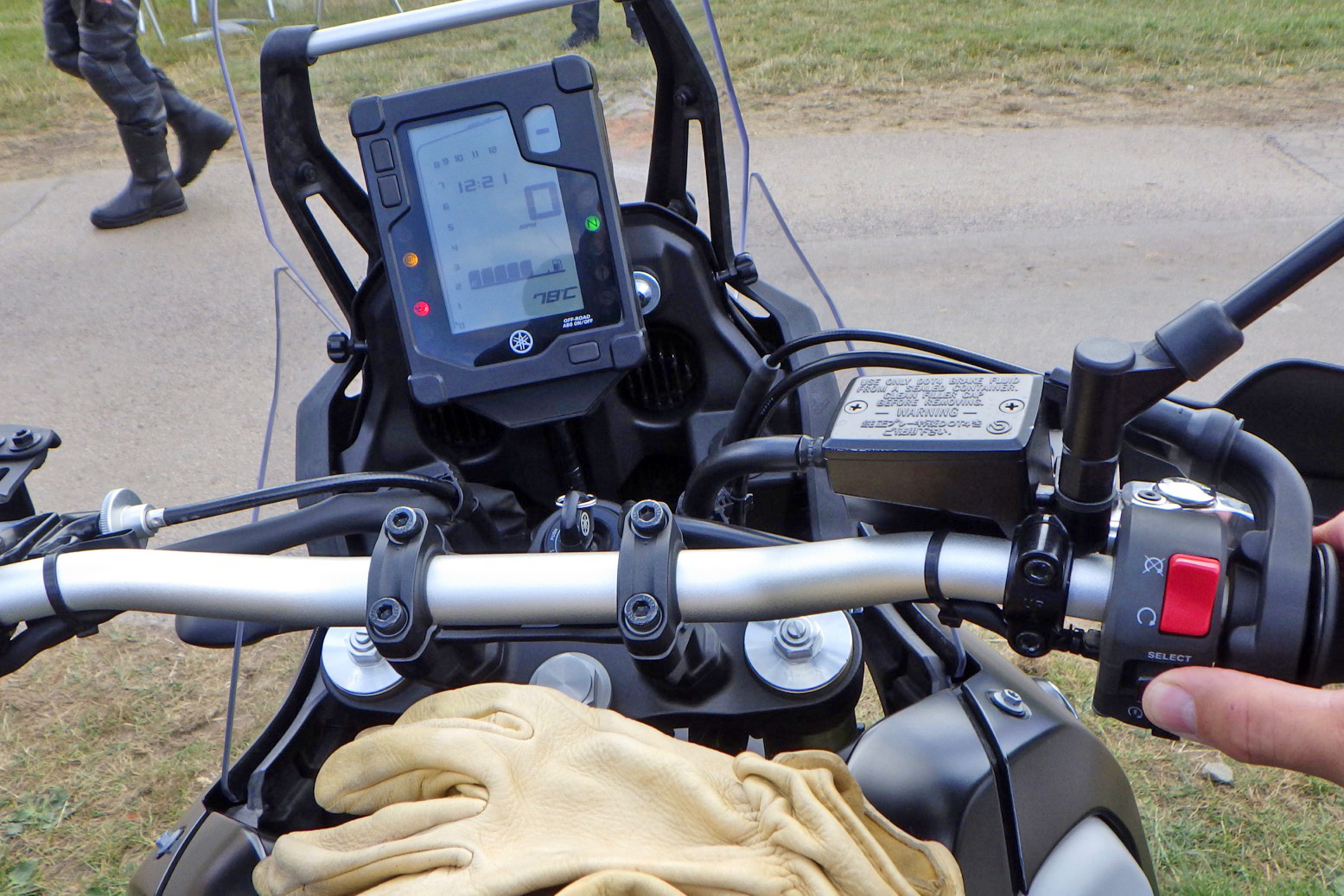
The CP2 (left) may be narrow, but it’s a tall wet sump motor which makes it less suited to trail bikes in need of ground clearance without getting too top-heavy; there’s a lot of mass above those piston crowns and a fuel tank too. This is partly why four-stroke trail and dirt bikes are traditionally dry sump, with a pump and an oil reservoir fitted somewhere.
While repairing my XSR I remember wondering if I could have realistically reduced the 3-inch depth of the protruding sump, even though it was fairly well surrounded by the silencer box and header pipes. Some oil volume would have been lost.
On the XT7, under the skimpy 2mm alloy bashplate, it’s the same deep sump, so the longer suspension makes the whole bike top-heavy at parking speeds. It’s nothing new with such bikes, but I did have an … oh shit! moment, lowering the bike onto the stand on an off-camber path to remove dry grass from the hot pipes. It’s a long old way to fall, even at zero mph.
The narrow but steeply raked screen looked like it should do the job. Housed in the rally-style fairing, you’d also hope that, with four-LEDs plus two smaller day-lights, the headlight set-up (left) will do more than just look good once the sun goes down. Sat on the bike, I liked the high, wide but slim feel and, apart from the saddle height and weight, felt right at home on the XT7.
For a bike carrying the Tenere name of the legendary ‘desert within a desert’, only the modest fuel tank capacity spoils the picture. You imagine a sub-205-kg wet weight by any means possible was locked into the design brief, and the easiest way to play with that is tank volume. It’s only 2 litres bigger than my XSR, but if the XT700 averages the same consumption, that will still add up to a range of 420 km (260 miles), or between 330 and 510 km. Right on target for a travel bike.
One easy way of unobtrusively supplementing fuel range on the XT would be to attach flat fuel containers low down to the accessory engine crash bars (right; another 200 quid). Fyi, the bike I rode had recorded an average of 58mpg / 20.5kpl since the tank had been refilled. Not spectacular.
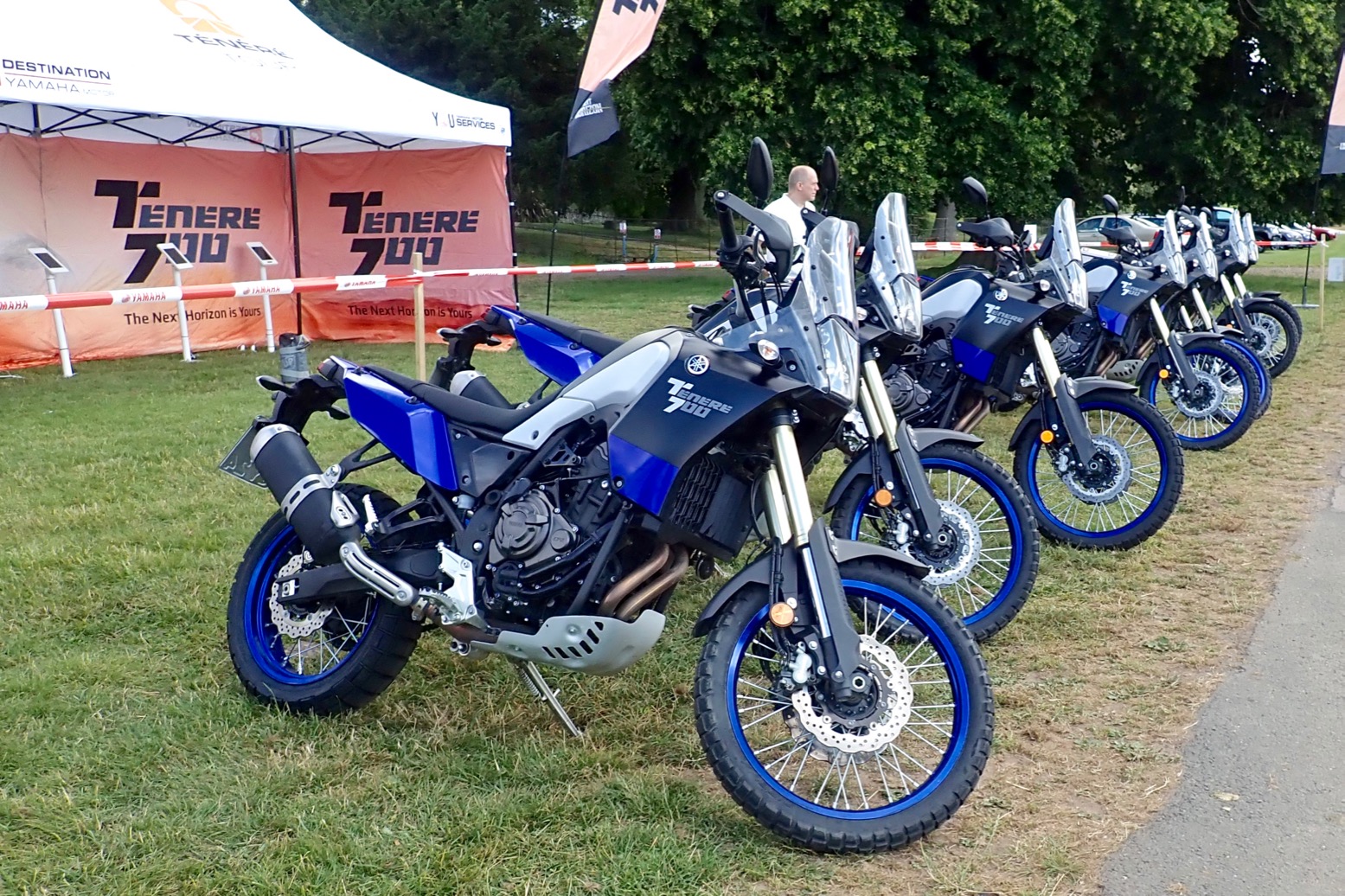
T7 test ride
The 45-minute test ride – part of the Tenere Tour doing Europe at the moment – was an escorted run. This meant little chance to grab good photos. About eight German-registered XT7s were available, all with a few light scrapes from previous test rides. My bike showed 3800 miles on the clock.
You had to book a time allocation. I arrived before the show gates opened and even then, got on the second or third slot that day. I overheard that by the end of Friday the whole weekend had been booked out.
Initially, the route followed a marked grassy trail around the spacious grounds of Ragley Hall, before taking off on a blast around Warwickshire’s lush, midsummer backroads. I was told all these pre-production bikes were all destined for the crusher (a common practice). No chance of getting an ex-test bike cheap. Sad face.
On the trail
Pulling away, who can resist the instantaneous grunt of that CP2 engine, characterised by its 270-° crank timing, (left; more here). In the modern era 270 was first used on Yamaha’s TDM900 but has now become almost ubiquitous on big parallel twins. It’s one of my all-time favourite motors, harking back to my XS650 or of course, your favourite 90-° V-twin, whose firing pulse is replicated by a 270-° P-twin crank, but in a much more compact engine. Thanks to revised injection mapping and a new pipe and air box, the XT7’s added low-down torque was noticeable right away and might even have been described as snatchy. The radiator is a little different, too.
According to Yamaha specs, the XT700’s 72hp at 9000 rpm is 5% less than the three CP2-engined road bikes, but it has the same 68Nm of torque at 6500rpm. I imagine the XT’s long, rally-style pipe (left) helps deliver that low-down torque, compared to the stumpy XSR/MT-07 silencers (inset).
The way my clutch was adjusted, initially, the unfamiliar bike was a bit of a handful in the slower sections – or maybe it was just a little snatchy at low rpm. This wasn’t helped by the tall first gear and shallow-blocked Pirelli Scorpion Rally do-it-all tyres on the flattened dry grass with all the grip of old lino.
Tubeless spoked rims (as found on the XT1200Z) would have blown the XT700 budget, but I have a hope that the rear rim has safety beads, which make sealing with Airtight or BARTubeless a possibility. On the front that’s less likely, but safety-beaded 21s are available. As it is, a tubeless rear is more useful, as on the road that’s where most flats occur.
Gearing
Riding along in first hand off the throttle at the 1400rpm tickover, the bike fuelled cleanly but the speedo registered 7mph. As with so many bikes in this category, that’s normal but too fast for trickling uphill round gnarly hairpins without slipping the clutch, though I recall the XSR managing that surprisingly well in Morocco. Problems may occur doing that for too long in hot conditions, but let’s be realistic: this is a 200-kilo bike. Despite the exuberant promo images (left), the elephant in the adventure-motorcycling room is the belief that bikes two or three times the weight of their pilots are manageable on anything more than smooth gravel tracks. For most, they make fun road bikes with a cool, adventuresome image.
Compared to the MT-07 (and probably XSR), I read here that they’ve added three teeth on the rear sprocket but taken one off the front, ending up with 15/46. That adds up to an identical 0.33 final-drive ratio unless I am very much mistaken, so it may have more to do with chain/swingarm clearance for the longer-travel suspension. It’s actually the taller 18-inch wheel with a 150/70-R18 tyre which increases the overall diameter to raise the gearing. Unless they’ve taken the trouble to modify the internal gear ratios, any mention of ‘… special optimised transmission…’ (as above) is presumably just marketing flannel.
Sat upright, grappling the wide ‘bars, at least the big trail bike’s commanding seating position makes you feel both in control and nimble; ready to respond with confidence to whatever’s ahead. It’s not a new idea, but squidgy rubber inserts in the footrests (right) also mean you get the benefits of comfort and isolation sitting down, with boot soles compressing the rubber and biting the serrated metal edges when standing up.
Doing this, as expected, I found the fatbars an inch or two too low to stand comfortably (me: 6 foot 1). That can be fixed with Yamaha risers or similar, but I did notice that to get the stock bars up, the rubber-mounted bar mounts (left) are even higher than they were on my XSR. Add some risers and that’s getting on for six inches of leverage on the triple clamp mounts when hammering over rough terrain or when the bike falls over (my XSR ones were bent in the write-off crash).
This may be a red herring and only relevant to taller riders who expect to need to stand, but it’s a problem I’ve encountered on projects when trying to convert what’s essentially a road bike into an all-road travel bike – particularly when attempting to Tenerise a TDM (right) a few years back. You can’t just fit some apehangers and hope for the best. At the front, the XT700 is still a low-headstock, MT-07/XSR road chassis (more below).
Who knows what the settings were, but the suspension coped fine on the trail at our modest speeds. It soaked up what few bumps I could find and had it not, there’s preload as well as rebound and compression damping to meddle with. It was hard to make a worthwhile evaluation in our 10 to 15 minutes on the grassy trails, but it’s unlikely the Tenere’s suspension will urgently need the same Rally-Raid treatment which their CB500Xs benefit from. A great motor and good, adjustable suspension is half the battle won.
The brakes too had enough feel plus ABS back-up to inspire confidence and stop you embarrassing yourself. I never knowingly actuated the ABS.
It might be an off-road clearance issue, but I‘d have prefered a powerful single rotor on the front; it saves weight and worked fine on an NC750X I tried later. The XT660Z single (right) which this bike effectively replaces was unnecessarily lumbered with twin front discs. The front wheel on that thing weighed a ton.
On the road
Truly, there’s nothing more I need from a motorbike engine apart from 100mpg: smooth, ambrosia-like power delivery right off the throttle, but with that sweet, characterful lumpiness of warm rice pudding and which can never be called harshness or vibration. Just as it was on my XSR. I bet the manual Africa Twin and some Triumph twins are similar – a KTM790 I rode wasn’t, and it’s what’s missing from Honda’s bland CB500X.
Once on the highway, the escort riders didn’t dawdle unnecessarily and the XT700 took it all in its stride. Potholes and drain covers didn’t faze the springing, the brakes handled sudden bunch-ups well, and the moto just pulled through it all as fast as you wanted to go. I could have kept going all day.
You’re sitting on 200mm or 8 inches of fully adjustable and compliant suspension with USD forks and the PLA on the back. As it’s so easy, I cranked the knob all the way in to 26: the ride was much firmer – ready for some heavy throwovers and a dusty trail. Back at the normal mid-setting, the feel is of being able to hit irregularities with less wincing while – if you know what you’re doing – tuning the damping in both directions as well as easily setting the sag; the vital metric which is more or less 30% of total travel).
Where 60 to 70mph was possible, the blast from the slim screen hit me at nose level but still gave useful protection. I could crouch and get out of the wind, but wearing a Moto III didn’t help the aerodynamics. You’re riding a motorbike; don’t expect a turbulence-free cocoon. Just as since time immemorial, the mirrors shared the rear view with my arms but were blur-free.

After a while I noticed that the plastic clutch plate and arm cover (right; not present on earlier CP2 bikes) pressed into my right shin – and this was without knee-high boots. Maybe I have fat calves but it was never an issue on the XSR7 and at least two other reviews have mentioned it. I’m not sure what it does – stop boot rubbing? It could be easily removed.
The stock bashplate (left) is skimpy, but it’s a start. For 200 quid Yamaha do an optional version (right) which better covers the vulnerable water-pump and inlet pipes. These components were good and mashed following a low-side on the written-off XSR I bought. The engine bars pictured far below will work with the standard bashplate.
Revised chassis
The potential of lively owners grabbing big air required a heavily revised frame on the T7.Among other things, on the XSR700 etc, the top of the laid-over shock attaches to a lug on the top of the gearbox casing (above right); an expensive repair if that sheers off during a Great Escape (left). The XT700 has a different linkage for a vertically positioned shock which mounts to a chassis cross-member which is better able to contain shock loads.
They call it double cradle, but you can clearly see above left, it’s not a closed loop. The new (red) downtubes meet the footrest mounts because, using the same rationale as the shock, a bashplate is better mounted to a chassis than a crankcase.
I didn’t get a chance to remove the seat and panels to eye up the rear subframe, but again, from the image top left you can see the triangulation is much greater, partly because the silencer needs to hang off it. Round the headstock they’ve added additional bracing.
Is that an alloy sidestand? If so I presume it’s solid cast and will be up to supporting the weight of the lent-over loaded bike when oiling the chain or removing the wheel. They do offer an optional centre stand which, having had one for the first time in years on the Himalayan, is a worthwhile redundancy on a travel bike.
The first batch of XT700s are being assembled in France right now from parts made in Japan. This must mean the MBK Industrie plant in Saint Quentin, south of Lille. A few early-adopters got their pre-orders in July 2019; the rest got them from September onwards when production resumed after the August factory break.
North America gets bikes shipped directly from Japan some time in late 2020 (as will Australiasia and maybe RSA, following late-2019 deliveries from Europe). The official explanation claims it’s: “Due to differing government regulatory standards and factory production line schedules.”
Either way, the wait of a year ought to help eliminate any teething problems, unlikely though they are with the established CP2 engine, at least. And a Japanese-built XT700 might be something to boast about. After all, from 2020 KTM’s similar 790 is said to switch assembly to… O M G.. China!
Summing Up
The XT700 is a hard bike to dislike. It lacks the weight of the 850GS and the added bulk of an Africa Twin, the harshness, racket, blingy complexity and cost of the KTM790R, and the relative blandness and cheap suspension of the CB500X as well as, dare I add, an NC750X. Like the CB-X, it’s a modern-day UJAM, not extreme in any way, be it suspension travel, power delivery, appearance, electronic sophistication or price.
You see reviewers mention ‘only 72hp’ for a 689-cc-engine and you really have to chuckle. It actually makes nearly 15% more power per litre than the 790, if that matters at all, but either way it’ll do 120, cruise comfortably at 80mph, and overtake swiftly uphill and into the wind when needed. How often do you ride much faster, while still being able to hit the trails with confidence?
I came to this test ride fully expecting to love the new Tenere – a bike I tried to emulate two years ago with my XSR Scrambler which, along with the Himalayan, was one of the most enjoyable rides I’ve had in years.
I was even considering buying a T7 after the test, with all the risks of delayed delivery, teething problems and depreciation. For the price and the weight, nothing else new in the table below comes close once you factor in its genuine off-road ability for its class. But I’ve not bought a new bike in the UK for nearly 40 years; to me it’s just too extravagant with so much good nearly as good used stuff out there. In a way, knowing that it all turned out well for the XT700 is good enough for me. For the sort of riding I still aspire to, I’d be more comfortable with something a bit lower and lighter.
If not an XT700 then…
The man from Honda hinted an 1100 was in the AT pipeline, but right now CRF1000L Africa Twins with about 10,000 miles are going for under £7k. I know, I bought one later. That’s a similarly grunty 270-degree twin (with a DCT option), but in a bigger bike with a lot more weight. BMWs hold their value annoyingly well; used year-old 850GSs with KTM-like tech, tubeless wheels but an AT’s weight currently start at £9k. Meanwhile, there are Rally Raid CB500Xs going from £4300, plain, old-model high-milers from under three grand and 2019 CB-Xs with the desirable 19-inch fronts from just £5200.
The XT700’s profile and price is pitched midway between the ultra-accessible CB500X and ageing V-Strom, the bulkier Africa Twin and the 790 Adventures and BMs. Even if dynamically you’d assume the 790s must be better out of the crate for hard off-roading (I did try one; not for me), realistically any 200+kg bike can only be exploited by a skilled and fit rider. With talk of a bigger AT, people are wondering if a 7-850cc Africa Twin might spin off from that. Until (or if) that ever happens, the XT700 will have a well-deserved market niche all to itself.




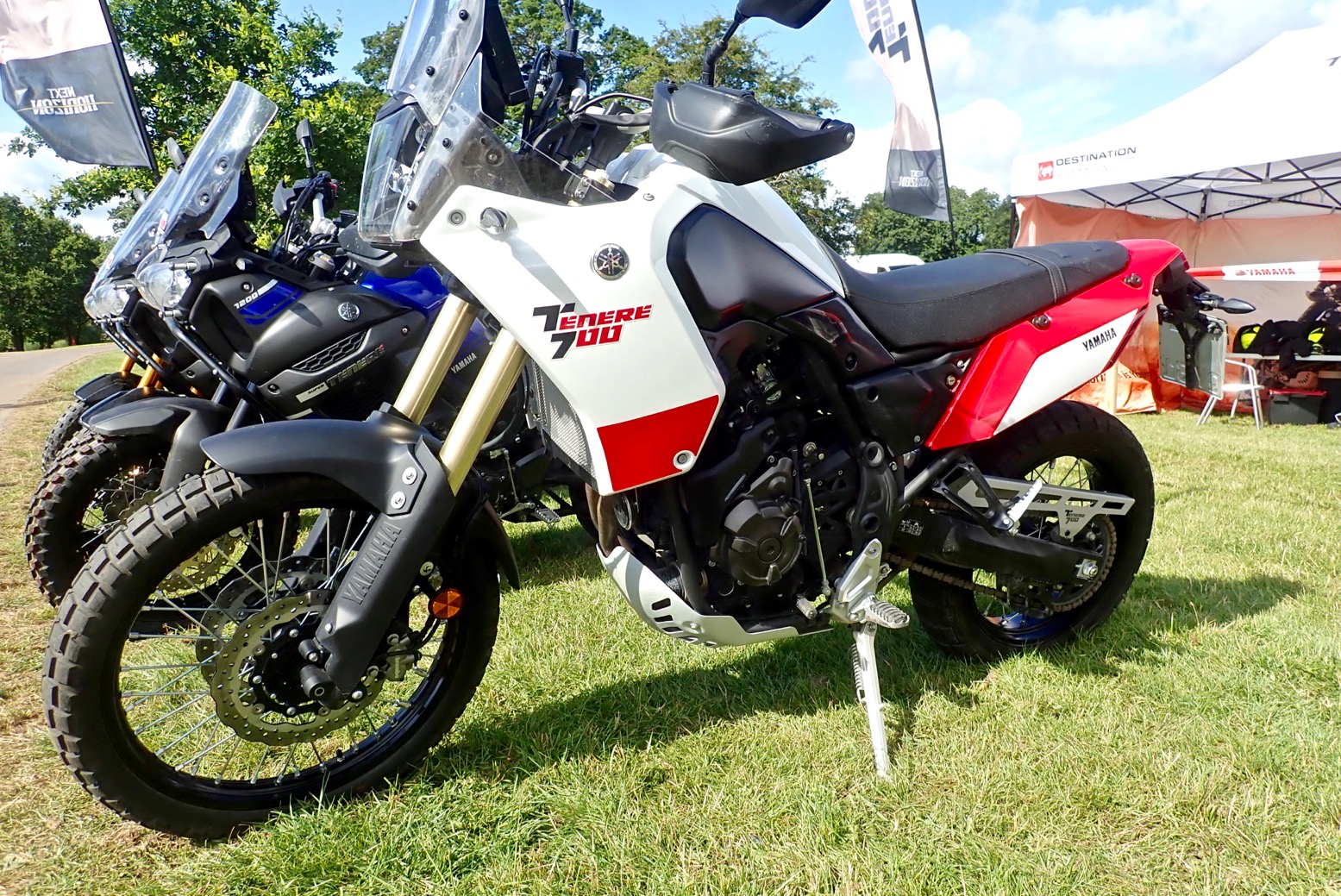

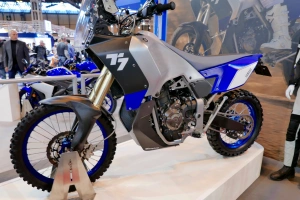
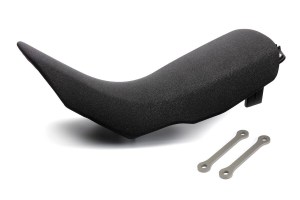

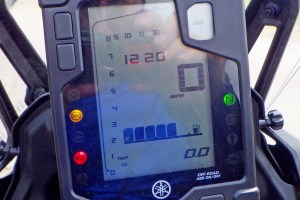
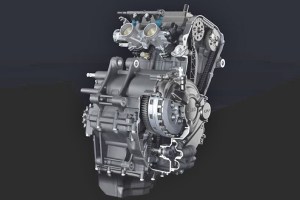


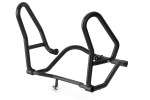
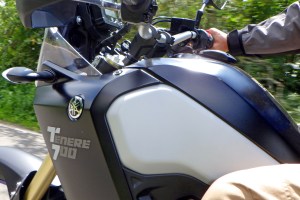

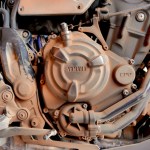



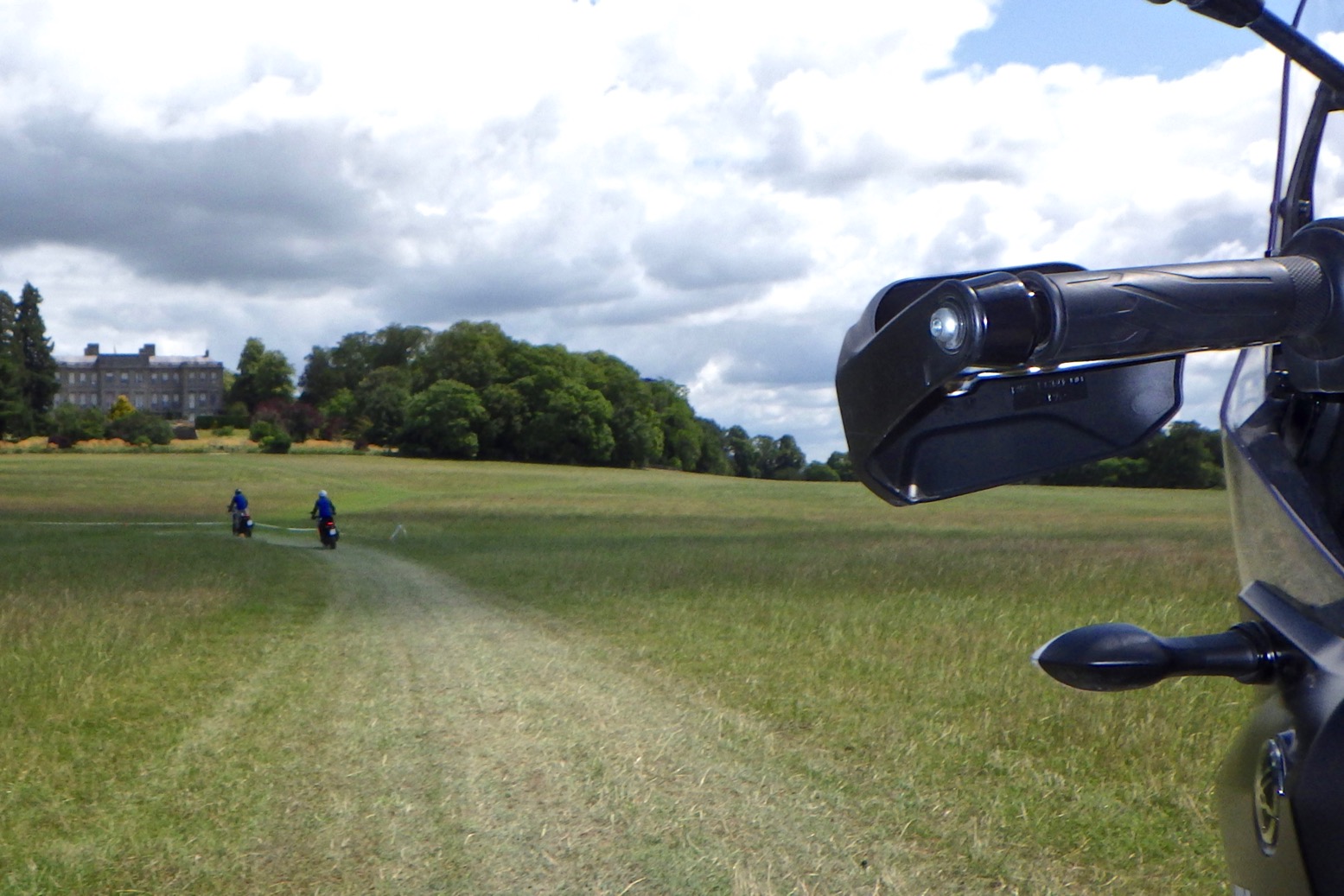




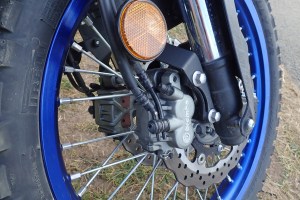
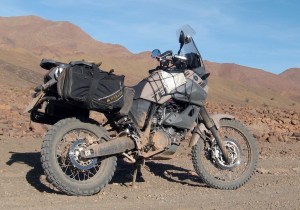



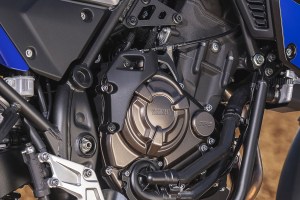
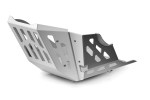
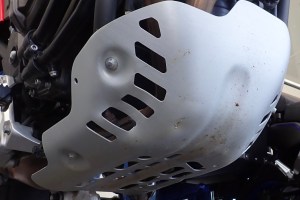
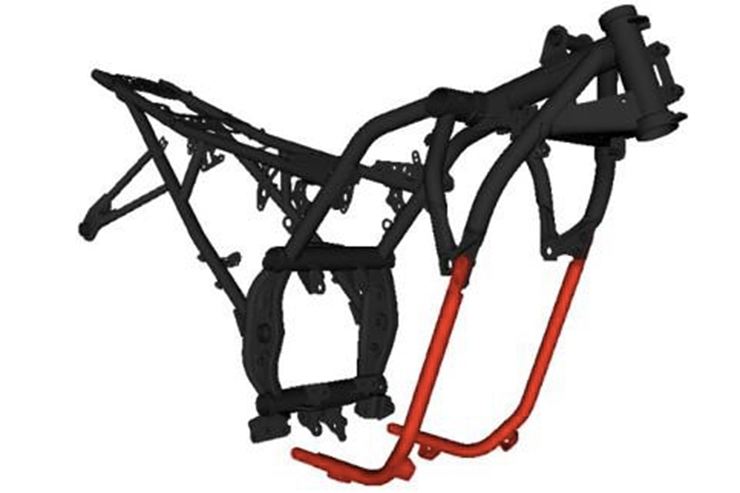
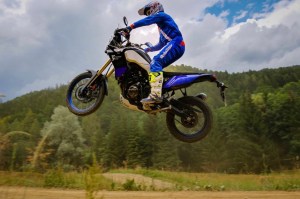



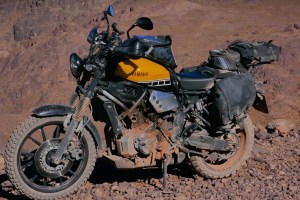
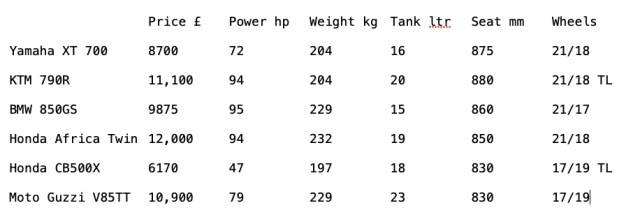
It’s a testament to the Tenere 700 (US nomenclature, no XT here), that it still sells around the MSRP or more on the used market (10k), while the CRF450L is already down around 6-7k with significant mods.
LikeLike
Just brought one and picked it up as it was a cancelled order. Can’t it maybe slightly heavy but could be the unicorn bike!!
LikeLike
Good for you! let us know your impressions or link to them.
LikeLike
Find me on Facebook or you tube, just type my name. I put lots of videos up, some funny (lads tours) some serious (The Grand idea)
Ive watched all your stuff on you tube and found your book most helpful in my love affair with Morocco.
LikeLike
Nice review Chris. I enjoyed looking at your XRS at hubb uk a few years ago. I bumped into you on the camp ground at Ragley hall andanaged to get a test ride on Friday morning, it felt light and chuckable while on the move. I’m thinking of buying one…
LikeLike
Thanks. I’m sure I’ll get round to buying a used one in a year or two. Just bought an NC750 on the weekend and have to say, the CP2 motor feels a bit nicer (and my XSR was only 46hp). But I never got close to 93mpg on it.
LikeLike
Must have one……..
LikeLike
Why no comparison with the Husqvarna 701? Similar engine capacity and power to the 700 but the Husky is almost exactly 50kg lighter (153kg fuelled) and beats the pants off the Tenere 700 (which I tried at the ABR rally) in terms of engine feel and suspension. Even the price is similar.
LikeLike
You’re comparing apples and oranges Dave
LikeLike
Dave, after 2 690s, the issue for me has been (and probably always be) that NR gearbox. Why KTM never fitted the EXC gearbox I have no idea. For the type of long distance multi-surface riding I do, it’s a deal breaker.
LikeLike